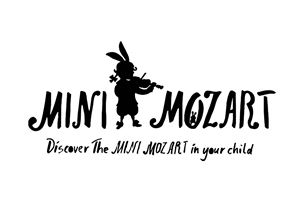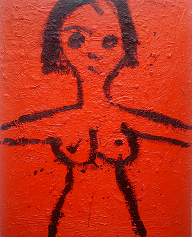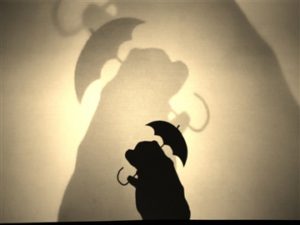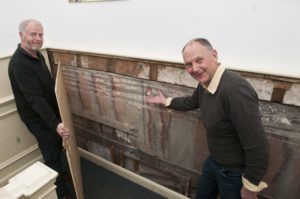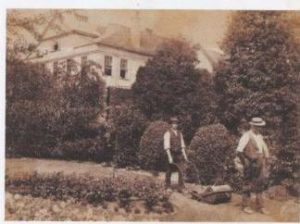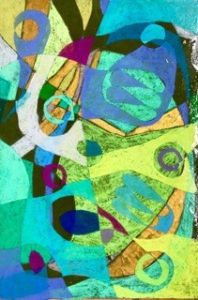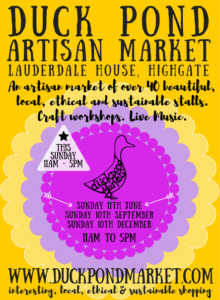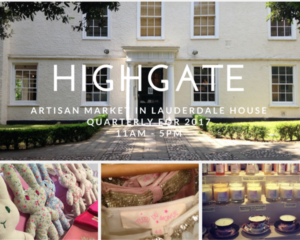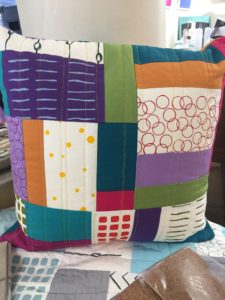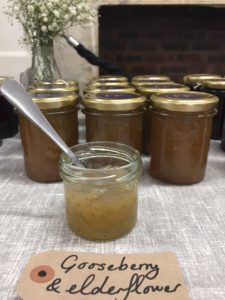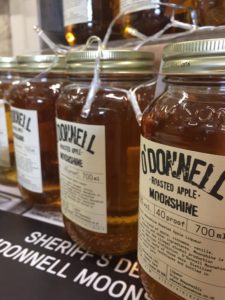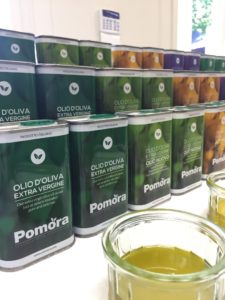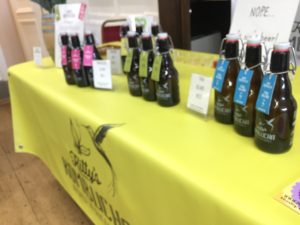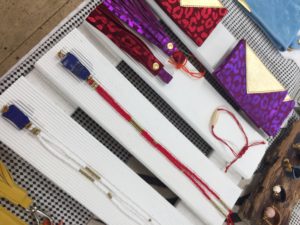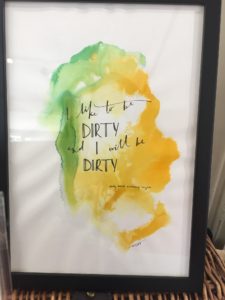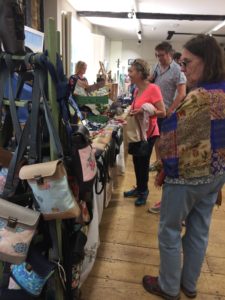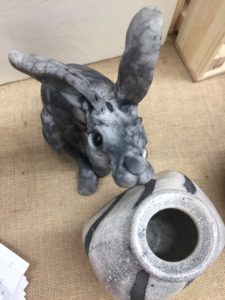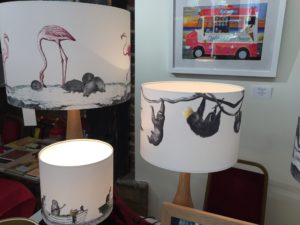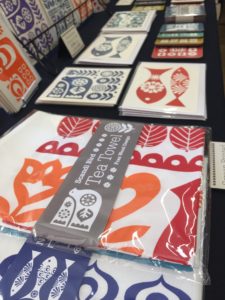mini mozart
Mini Mozart offers fun and interactive live music classes for toddlers and babies. The classes feature two or more live instruments; a clarinet, violin, flute, French horn, saxophone or trumpet with a piano accompanist. The idea of Mini Mozart is to get children actually listening, not just hearing. Children interact with our live musicians in a way that is impossible with recorded music.
It’s hard to say which will be your favourite part of the class; the warm up where the teachers introduce their instruments allowing your little one to get up close and touch the instruments, or the part where they reveal their suitcase full of fun props that will entice your child on an interactive musical adventure.
Packed with puppets, parachutes & percussion, bursting with Bach & bubbles, and flush with fairy tales and flutes; follow our rotating team of 4 teachers and their piano accompanist on a multi-sensory musical journey that will inspire your little one with instruments from every section of the orchestra.
“I couldn’t wait to get out and about after Alfie was born. Mini Mozart was perfect because it was interesting for both of us!” Claire, Mum to Alfie (aged 4 months)
Start time: 9.30am for toddlers and 10.15 for babies.
Time: 09:30
Venue: Lauderdale House
| Price band | A | B |
| Standard | £143.00 | |
| Concession | ||
| Child |
Website: www.minimozart.com
One off payment of £143.00 or £47.66 every month for 3 months. Start time 9.30am for toddlers and 10.15 for babies.
Philip Diggle: “I see a red door and I want it painted black.”
Rolling Stones, Paint It Black.
Memory Theatre The ‘memory theatre’ was an aspect of a science of the imagination which was practiced from Classical times up to the Renaissance. It was used for the development of memory, and also as a ‘mind-map’ – a connected symbolic space, often represented as a building, which spanned the imaginative or conceptual faculty. (digital brilliance.com) Oxford Dictionaries.
Philip Diggle is inspired by philosophical ideas, and these are used to tie together the paintings on the theme of Memory Theatre in his fifth exhibition at Highgate Gallery. The ‘stage’ for Diggle’s ‘memory theatre’ is painting; it is both the forum and the activity. In painting, memories are discovered and ordered in the doing and building of the works.
Diggle’s work is vigorously physical, with encrusted surfaces thick with oil paint. In these pieces, the paint becomes the means by which memories are enclosed, caged, covered, discovered, accreted, obscured and created. In his last Highgate Gallery show, large images of heads dominated. Some of these heads exist beneath the new works, so that creation and destruction co-exist. The process is a demonstration and investigation of the persistence yet elusiveness of memory.
Vivid red paintings are almost 3-dimensional objects revealing their making and history and physicality and – as Diggle puts it – screaming ‘I’m alive’. Works in brown, metaphorical visceral battles, attest to a more desperate survival impulse – ‘I’m still here’.
A series of larger works refer to human experience within the built environment – ‘contained’ life, a ‘theatre’. In some, the figure (highly abstracted) appears at the centre of the scenes. In these, another interest of Diggle’s emerges: rhetoric. His own mark-making becomes a metaphor for the verbal play of words in public argument.
Philip’s ideas found practical focus in his art classes. Pupils were encouraged to speak, present and respond to poetry and philosophy: a critical method which built self-awareness, confidence, and sense of context. This initiative was rolled out school-wide.
Highgate Gallery open Tue-Fri 1-5; Sat 11-4; Sun 11-5. Closed Mon.
Exhibition continues until 15 February.
Philip Diggle: “I see a red door and I want it painted black.”
Rolling Stones, Paint It Black.
Memory Theatre The ‘memory theatre’ was an aspect of a science of the imagination which was practiced from Classical times up to the Renaissance. It was used for the development of memory, and also as a ‘mind-map’ – a connected symbolic space, often represented as a building, which spanned the imaginative or conceptual faculty. (digital brilliance.com) Oxford Dictionaries.
Philip Diggle is inspired by philosophical ideas, and these are used to tie together the paintings on the theme of Memory Theatre in his fifth exhibition at Highgate Gallery. The ‘stage’ for Diggle’s ‘memory theatre’ is painting; it is both the forum and the activity. In painting, memories are discovered and ordered in the doing and building of the works.
Diggle’s work is vigorously physical, with encrusted surfaces thick with oil paint. In these pieces, the paint becomes the means by which memories are enclosed, caged, covered, discovered, accreted, obscured and created. In his last Highgate Gallery show, large images of heads dominated. Some of these heads exist beneath the new works, so that creation and destruction co-exist. The process is a demonstration and investigation of the persistence yet elusiveness of memory.
Vivid red paintings are almost 3-dimensional objects revealing their making and history and physicality and – as Diggle puts it – screaming ‘I’m alive’. Works in brown, metaphorical visceral battles, attest to a more desperate survival impulse – ‘I’m still here’.
A series of larger works refer to human experience within the built environment – ‘contained’ life, a ‘theatre’. In some, the figure (highly abstracted) appears at the centre of the scenes. In these, another interest of Diggle’s emerges: rhetoric. His own mark-making becomes a metaphor for the verbal play of words in public argument.
Philip’s ideas found practical focus in his art classes. Pupils were encouraged to speak, present and respond to poetry and philosophy: a critical method which built self-awareness, confidence, and sense of context. This initiative was rolled out school-wide.
Highgate Gallery open Tue-Fri 1-5; Sat 11-4; Sun 11-5. Closed Mon.
Exhibition continues until 15 February.
Philip Diggle: “I see a red door and I want it painted black.”
Rolling Stones, Paint It Black.
Memory Theatre The ‘memory theatre’ was an aspect of a science of the imagination which was practiced from Classical times up to the Renaissance. It was used for the development of memory, and also as a ‘mind-map’ – a connected symbolic space, often represented as a building, which spanned the imaginative or conceptual faculty. (digital brilliance.com) Oxford Dictionaries.
Philip Diggle is inspired by philosophical ideas, and these are used to tie together the paintings on the theme of Memory Theatre in his fifth exhibition at Highgate Gallery. The ‘stage’ for Diggle’s ‘memory theatre’ is painting; it is both the forum and the activity. In painting, memories are discovered and ordered in the doing and building of the works.
Diggle’s work is vigorously physical, with encrusted surfaces thick with oil paint. In these pieces, the paint becomes the means by which memories are enclosed, caged, covered, discovered, accreted, obscured and created. In his last Highgate Gallery show, large images of heads dominated. Some of these heads exist beneath the new works, so that creation and destruction co-exist. The process is a demonstration and investigation of the persistence yet elusiveness of memory.
Vivid red paintings are almost 3-dimensional objects revealing their making and history and physicality and – as Diggle puts it – screaming ‘I’m alive’. Works in brown, metaphorical visceral battles, attest to a more desperate survival impulse – ‘I’m still here’.
A series of larger works refer to human experience within the built environment – ‘contained’ life, a ‘theatre’. In some, the figure (highly abstracted) appears at the centre of the scenes. In these, another interest of Diggle’s emerges: rhetoric. His own mark-making becomes a metaphor for the verbal play of words in public argument.
Philip’s ideas found practical focus in his art classes. Pupils were encouraged to speak, present and respond to poetry and philosophy: a critical method which built self-awareness, confidence, and sense of context. This initiative was rolled out school-wide.
Highgate Gallery open Tue-Fri 1-5; Sat 11-4; Sun 11-5. Closed Mon.
Exhibition continues until 15 February.
The very popular Little Owl Book Club returns in January with an extra class due to demand. This award-winning class for kids age 2-4 takes place in our light and airy conservatory on Friday mornings. Devised with a reading specialist the class gives a fun start to phonics and letters. There are 2 great stories, a letter of the week taught with active games, then a fun art project to keep little hands busy.
Class 1: 10.00-10.50
Class 2: 11.05-11.55
No classes during half-term: Monday 12 -Friday 16 February
Philip Diggle: “I see a red door and I want it painted black.”
Rolling Stones, Paint It Black.
Memory Theatre The ‘memory theatre’ was an aspect of a science of the imagination which was practiced from Classical times up to the Renaissance. It was used for the development of memory, and also as a ‘mind-map’ – a connected symbolic space, often represented as a building, which spanned the imaginative or conceptual faculty. (digital brilliance.com) Oxford Dictionaries.
Philip Diggle is inspired by philosophical ideas, and these are used to tie together the paintings on the theme of Memory Theatre in his fifth exhibition at Highgate Gallery. The ‘stage’ for Diggle’s ‘memory theatre’ is painting; it is both the forum and the activity. In painting, memories are discovered and ordered in the doing and building of the works.
Diggle’s work is vigorously physical, with encrusted surfaces thick with oil paint. In these pieces, the paint becomes the means by which memories are enclosed, caged, covered, discovered, accreted, obscured and created. In his last Highgate Gallery show, large images of heads dominated. Some of these heads exist beneath the new works, so that creation and destruction co-exist. The process is a demonstration and investigation of the persistence yet elusiveness of memory.
Vivid red paintings are almost 3-dimensional objects revealing their making and history and physicality and – as Diggle puts it – screaming ‘I’m alive’. Works in brown, metaphorical visceral battles, attest to a more desperate survival impulse – ‘I’m still here’.
A series of larger works refer to human experience within the built environment – ‘contained’ life, a ‘theatre’. In some, the figure (highly abstracted) appears at the centre of the scenes. In these, another interest of Diggle’s emerges: rhetoric. His own mark-making becomes a metaphor for the verbal play of words in public argument.
Philip’s ideas found practical focus in his art classes. Pupils were encouraged to speak, present and respond to poetry and philosophy: a critical method which built self-awareness, confidence, and sense of context. This initiative was rolled out school-wide.
Highgate Gallery open Tue-Fri 1-5; Sat 11-4; Sun 11-5. Closed Mon.
Exhibition continues until 15 February.
Philip Diggle: “I see a red door and I want it painted black.”
Rolling Stones, Paint It Black.
Memory Theatre The ‘memory theatre’ was an aspect of a science of the imagination which was practiced from Classical times up to the Renaissance. It was used for the development of memory, and also as a ‘mind-map’ – a connected symbolic space, often represented as a building, which spanned the imaginative or conceptual faculty.
(digital brilliance.com) Oxford Dictionaries.
Philip Diggle is inspired by philosophical ideas, and these are used to tie together the paintings on the theme of Memory Theatre in his fifth exhibition at Highgate Gallery. The ‘stage’ for Diggle’s ‘memory theatre’ is painting; it is both the forum and the activity. In painting, memories are discovered and ordered in the doing and building of the works.
Diggle’s work is vigorously physical, with encrusted surfaces thick with oil paint. In these pieces, the paint becomes the means by which memories are enclosed, caged, covered, discovered, accreted, obscured and created. In his last Highgate Gallery show, large images of heads dominated. Some of these heads exist beneath the new works, so that creation and destruction co-exist. The process is a demonstration and investigation of the persistence yet elusiveness of memory.
Vivid red paintings are almost 3-dimensional objects revealing their making and history and physicality and – as Diggle puts it – screaming ‘I’m alive’. Works in brown, metaphorical visceral battles, attest to a more desperate survival impulse – ‘I’m still here’.
A series of larger works refer to human experience within the built environment – ‘contained’ life, a ‘theatre’. In some, the figure (highly abstracted) appears at the centre of the scenes. In these, another interest of Diggle’s emerges: rhetoric. His own mark-making becomes a metaphor for the verbal play of words in public argument.
Philip’s ideas found practical focus in his art classes. Pupils were encouraged to speak, present and respond to poetry and philosophy: a critical method which built self-awareness, confidence, and sense of context. This initiative was rolled out school-wide.
Highgate Gallery open Tue-Fri 1-5; Sat 11-4; Sun 11-5. Closed Mon.
Exhibition continues until 15 February.
Philip Diggle: “I see a red door and I want it painted black.”
Rolling Stones, Paint It Black.
Memory Theatre The ‘memory theatre’ was an aspect of a science of the imagination which was practiced from Classical times up to the Renaissance. It was used for the development of memory, and also as a ‘mind-map’ – a connected symbolic space, often represented as a building, which spanned the imaginative or conceptual faculty. (digital brilliance.com) Oxford Dictionaries.
Philip Diggle is inspired by philosophical ideas, and these are used to tie together the paintings on the theme of Memory Theatre in his fifth exhibition at Highgate Gallery. The ‘stage’ for Diggle’s ‘memory theatre’ is painting; it is both the forum and the activity. In painting, memories are discovered and ordered in the doing and building of the works.
Diggle’s work is vigorously physical, with encrusted surfaces thick with oil paint. In these pieces, the paint becomes the means by which memories are enclosed, caged, covered, discovered, accreted, obscured and created. In his last Highgate Gallery show, large images of heads dominated. Some of these heads exist beneath the new works, so that creation and destruction co-exist. The process is a demonstration and investigation of the persistence yet elusiveness of memory.
Vivid red paintings are almost 3-dimensional objects revealing their making and history and physicality and – as Diggle puts it – screaming ‘I’m alive’. Works in brown, metaphorical visceral battles, attest to a more desperate survival impulse – ‘I’m still here’.
A series of larger works refer to human experience within the built environment – ‘contained’ life, a ‘theatre’. In some, the figure (highly abstracted) appears at the centre of the scenes. In these, another interest of Diggle’s emerges: rhetoric. His own mark-making becomes a metaphor for the verbal play of words in public argument.
Philip’s ideas found practical focus in his art classes. Pupils were encouraged to speak, present and respond to poetry and philosophy: a critical method which built self-awareness, confidence, and sense of context. This initiative was rolled out school-wide.
Highgate Gallery open Tue-Fri 1-5; Sat 11-4; Sun 11-5. Closed Mon.
Exhibition continues until 15 February.
mini mozart
Mini Mozart offers fun and interactive live music classes for toddlers and babies. The classes feature two or more live instruments; a clarinet, violin, flute, French horn, saxophone or trumpet with a piano accompanist. The idea of Mini Mozart is to get children actually listening, not just hearing. Children interact with our live musicians in a way that is impossible with recorded music.
It’s hard to say which will be your favourite part of the class; the warm up where the teachers introduce their instruments allowing your little one to get up close and touch the instruments, or the part where they reveal their suitcase full of fun props that will entice your child on an interactive musical adventure.
Packed with puppets, parachutes & percussion, bursting with Bach & bubbles, and flush with fairy tales and flutes; follow our rotating team of 4 teachers and their piano accompanist on a multi-sensory musical journey that will inspire your little one with instruments from every section of the orchestra.
“I couldn’t wait to get out and about after Alfie was born. Mini Mozart was perfect because it was interesting for both of us!” Claire, Mum to Alfie (aged 4 months)
Start time: 9.30am for toddlers and 10.15 for babies.
Time: 09:30
Venue: Lauderdale House
| Price band | A | B |
| Standard | £143.00 | |
| Concession | ||
| Child |
Website: www.minimozart.com
One off payment of £143.00 or £47.66 every month for 3 months. Start time 9.30am for toddlers and 10.15 for babies.
Philip Diggle: “I see a red door and I want it painted black.”
Rolling Stones, Paint It Black.
Memory Theatre The ‘memory theatre’ was an aspect of a science of the imagination which was practiced from Classical times up to the Renaissance. It was used for the development of memory, and also as a ‘mind-map’ – a connected symbolic space, often represented as a building, which spanned the imaginative or conceptual faculty. (digital brilliance.com) Oxford Dictionaries.
Philip Diggle is inspired by philosophical ideas, and these are used to tie together the paintings on the theme of Memory Theatre in his fifth exhibition at Highgate Gallery. The ‘stage’ for Diggle’s ‘memory theatre’ is painting; it is both the forum and the activity. In painting, memories are discovered and ordered in the doing and building of the works.
Diggle’s work is vigorously physical, with encrusted surfaces thick with oil paint. In these pieces, the paint becomes the means by which memories are enclosed, caged, covered, discovered, accreted, obscured and created. In his last Highgate Gallery show, large images of heads dominated. Some of these heads exist beneath the new works, so that creation and destruction co-exist. The process is a demonstration and investigation of the persistence yet elusiveness of memory.
Vivid red paintings are almost 3-dimensional objects revealing their making and history and physicality and – as Diggle puts it – screaming ‘I’m alive’. Works in brown, metaphorical visceral battles, attest to a more desperate survival impulse – ‘I’m still here’.
A series of larger works refer to human experience within the built environment – ‘contained’ life, a ‘theatre’. In some, the figure (highly abstracted) appears at the centre of the scenes. In these, another interest of Diggle’s emerges: rhetoric. His own mark-making becomes a metaphor for the verbal play of words in public argument.
Philip’s ideas found practical focus in his art classes. Pupils were encouraged to speak, present and respond to poetry and philosophy: a critical method which built self-awareness, confidence, and sense of context. This initiative was rolled out school-wide.
Highgate Gallery open Tue-Fri 1-5; Sat 11-4; Sun 11-5. Closed Mon.
Exhibition continues until 15 February.
Philip Diggle: “I see a red door and I want it painted black.”
Rolling Stones, Paint It Black.
Memory Theatre The ‘memory theatre’ was an aspect of a science of the imagination which was practiced from Classical times up to the Renaissance. It was used for the development of memory, and also as a ‘mind-map’ – a connected symbolic space, often represented as a building, which spanned the imaginative or conceptual faculty. (digital brilliance.com) Oxford Dictionaries.
Philip Diggle is inspired by philosophical ideas, and these are used to tie together the paintings on the theme of Memory Theatre in his fifth exhibition at Highgate Gallery. The ‘stage’ for Diggle’s ‘memory theatre’ is painting; it is both the forum and the activity. In painting, memories are discovered and ordered in the doing and building of the works.
Diggle’s work is vigorously physical, with encrusted surfaces thick with oil paint. In these pieces, the paint becomes the means by which memories are enclosed, caged, covered, discovered, accreted, obscured and created. In his last Highgate Gallery show, large images of heads dominated. Some of these heads exist beneath the new works, so that creation and destruction co-exist. The process is a demonstration and investigation of the persistence yet elusiveness of memory.
Vivid red paintings are almost 3-dimensional objects revealing their making and history and physicality and – as Diggle puts it – screaming ‘I’m alive’. Works in brown, metaphorical visceral battles, attest to a more desperate survival impulse – ‘I’m still here’.
A series of larger works refer to human experience within the built environment – ‘contained’ life, a ‘theatre’. In some, the figure (highly abstracted) appears at the centre of the scenes. In these, another interest of Diggle’s emerges: rhetoric. His own mark-making becomes a metaphor for the verbal play of words in public argument.
Philip’s ideas found practical focus in his art classes. Pupils were encouraged to speak, present and respond to poetry and philosophy: a critical method which built self-awareness, confidence, and sense of context. This initiative was rolled out school-wide.
Highgate Gallery open Tue-Fri 1-5; Sat 11-4; Sun 11-5. Closed Mon.
Exhibition continues until 15 February.
Philip Diggle: “I see a red door and I want it painted black.”
Rolling Stones, Paint It Black.
Memory Theatre The ‘memory theatre’ was an aspect of a science of the imagination which was practiced from Classical times up to the Renaissance. It was used for the development of memory, and also as a ‘mind-map’ – a connected symbolic space, often represented as a building, which spanned the imaginative or conceptual faculty. (digital brilliance.com) Oxford Dictionaries.
Philip Diggle is inspired by philosophical ideas, and these are used to tie together the paintings on the theme of Memory Theatre in his fifth exhibition at Highgate Gallery. The ‘stage’ for Diggle’s ‘memory theatre’ is painting; it is both the forum and the activity. In painting, memories are discovered and ordered in the doing and building of the works.
Diggle’s work is vigorously physical, with encrusted surfaces thick with oil paint. In these pieces, the paint becomes the means by which memories are enclosed, caged, covered, discovered, accreted, obscured and created. In his last Highgate Gallery show, large images of heads dominated. Some of these heads exist beneath the new works, so that creation and destruction co-exist. The process is a demonstration and investigation of the persistence yet elusiveness of memory.
Vivid red paintings are almost 3-dimensional objects revealing their making and history and physicality and – as Diggle puts it – screaming ‘I’m alive’. Works in brown, metaphorical visceral battles, attest to a more desperate survival impulse – ‘I’m still here’.
A series of larger works refer to human experience within the built environment – ‘contained’ life, a ‘theatre’. In some, the figure (highly abstracted) appears at the centre of the scenes. In these, another interest of Diggle’s emerges: rhetoric. His own mark-making becomes a metaphor for the verbal play of words in public argument.
Philip’s ideas found practical focus in his art classes. Pupils were encouraged to speak, present and respond to poetry and philosophy: a critical method which built self-awareness, confidence, and sense of context. This initiative was rolled out school-wide.
Highgate Gallery open Tue-Fri 1-5; Sat 11-4; Sun 11-5. Closed Mon.
Exhibition continues until 15 February.
String Dimensions
String Dimensions, founded by Bogdan Vacarescu in 2017, is a London-based chamber ensemble of international soloists.
String Dimensions is no ordinary chamber ensemble. United by a mutual interest in performing music all too rarely heard in today’s concert programmes, they have given the UK premieres of Antonio Bazzini’s works and perform neglected repertoire such as Fritz Kreisler’s String Quartet and works by Enescu and Cherubini. Their programmes also include original arrangements of well-known classical works for string duos, trios, quartets and larger groups.
The ensemble features Allegri Quartet cellist Vanessa Lucas-Smith, Canadian violist Brooke Day, Japanese violinist Akiko Ishikawa and it is led by the Romanian violinist Bogdan Vacarescu.
They all perform internationally in the most prestigious festivals and venues such as London’s Kings Place, Sydney Opera House, Cheltenham Music and Melbourne International Arts Festivals, as well as on radio and television worldwide.
Programme:
Grieg – String Quartet No 2 in F major (Unfinished)
Kreisler – String Quartet in A minor
Interval
Bazzini – String Quartet No 6 in F major
Liszt – Hungarian Rhapsody No. 2 (quartet arrangement)
http://stringdimensions.com
Facebook: @StringDimensions
Twitter: @StringDimension
Meet Drew Colby – a man whose shadow can do almost anything – make enchanting shadow animals and fabulous shadow lands and even funny shadow people, all with just two hands. Be amazed as shadow crabs creep from the sea, a shadow monkey does a hula-hoop dance and a tiny shadow man goes riding on a great, big shadow elephant.
My Shadow and Me
Meet Drew Colby – a man whose shadow can do almost anything – make enchanting shadow animals and fabulous shadow lands and even funny shadow people, all with just two hands. Be amazed as shadow crabs creep from the sea, a shadow monkey does a hula-hoop dance and a tiny shadow man goes riding on a great, big shadow elephant. Ages suitable for children aged 2-8 years.
Ticket Prices:
Adults/Children ( Standard) – £8.50
Adults/Children ( Concession) – £6.50
Family Ticket ( 2 Adults/ 2 Children) – £28.50
Family Ticket (Concession) 2 Adults/2 Children – £20.00
Under 18 months free.
To Book Tickets:
Box office: 02083488716
Email: enquiries@lauderdale.org.uk
Website: http://www.lauderdalehouse.co.uk
mini mozart
Mini Mozart offers fun and interactive live music classes for toddlers and babies. The classes feature two or more live instruments; a clarinet, violin, flute, French horn, saxophone or trumpet with a piano accompanist. The idea of Mini Mozart is to get children actually listening, not just hearing. Children interact with our live musicians in a way that is impossible with recorded music.
It’s hard to say which will be your favourite part of the class; the warm up where the teachers introduce their instruments allowing your little one to get up close and touch the instruments, or the part where they reveal their suitcase full of fun props that will entice your child on an interactive musical adventure.
Packed with puppets, parachutes & percussion, bursting with Bach & bubbles, and flush with fairy tales and flutes; follow our rotating team of 4 teachers and their piano accompanist on a multi-sensory musical journey that will inspire your little one with instruments from every section of the orchestra.
“I couldn’t wait to get out and about after Alfie was born. Mini Mozart was perfect because it was interesting for both of us!” Claire, Mum to Alfie (aged 4 months)
Start time: 9.30am for toddlers and 10.15 for babies.
Time: 09:30
Venue: Lauderdale House
| Price band | A | B |
| Standard | £143.00 | |
| Concession | ||
| Child |
Website: www.minimozart.com
One off payment of £143.00 or £47.66 every month for 3 months. Start time 9.30am for toddlers and 10.15 for babies.
The very popular Little Owl Book Club returns in January with an extra class due to demand. This award-winning class for kids age 2-4 takes place in our light and airy conservatory on Friday mornings. Devised with a reading specialist the class gives a fun start to phonics and letters. There are 2 great stories, a letter of the week taught with active games, then a fun art project to keep little hands busy.
Class 1: 10.00-10.50
Class 2: 11.05-11.55
No classes during half-term: Monday 12 -Friday 16 February
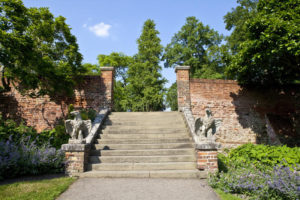
See Waterlow Park like you’ve never seen it before through the expert eyes of local historian Pam Cooper, who wrote the definitive history book on the Park.
In 1889 Waterlow Park was given as a ‘garden for the gardenless’ but it was a long journey from the Tudor nobles who claimed the area for country residences until the Victorian Sir Sydney Waterlow brought it together in a grand act of philanthropy.
Meet in the central internal Courtyard at Lauderdale House.
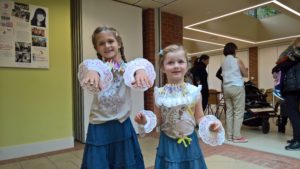
To celebrate the Highgate Heritage Weekend we have a wide range of free history themed children’s activities including:
- Dress up with your parents as one of the colourful characters in Lauderdale House’s history
- Pretend to be royal – take a photo behind our cut out of King Charles II, Nell Gwynn and their baby
- Explore our ‘artefacts’ box – a selection of curious household objects from the past. Guess what they are; what they were used for and how old they might be!
- Go around the House with our family trail
We also have the Arts Award Discover Trail -Free but £6 if you wish to apply for a certificate (latest start 3.30pm).
If you’re arty, love Lauderdale House and aged 6 to 11 you could receive an Arts Award!
This is an opportunity to go around as a family with our Arts Award Trail looking at the House and gardens in a new light, drawing pictures and making observations. It will take about an hour to complete. Children can do it just for fun or if you’d like recognition of all your hard work you can hand it in with the £6 fee and we will send it off and Arts Award so the child receives a certificate to say s/he has completed the first stage in a series of awards recognising their interest in the arts.
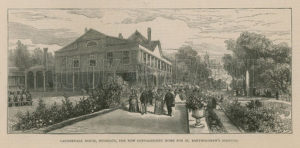
Curious about Highgate, its origins, stories, green spaces and buildings? Come in and talk to people who have an interest in and passion for local history. There will be representatives and stalls from the Roman Kilns in Highgate Woods, Camden Tour Guides, HLSI, Lady Gould’s Charity, Highgate School Museum, Friends of Kenwood, Highgate Horticultural Society, Friends of Hornsey Church Tower, Friends of Highgate Library Shepherds Hill, Highgate Society and lots of information about Lauderdale House.
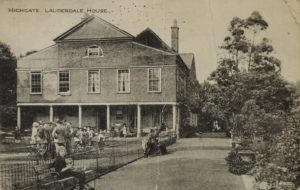
Uncover the architectural secrets of this fascinating 16th century house with Peter Barber OBE, author of Lauderdale Revealed, who has been a vital figure in protecting our history from the devastating 1963 fire to the 2017 renovation. We will be opening up our 17th century trompe l’oeil just for today!
Meet in the central internal Courtyard at Lauderdale House.
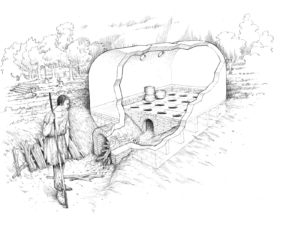
Friends of the Highgate Roman Kiln – Michael Hammerson and Nick Peacey – will tell you about its remarkable discovery in 1969 in Highgate Woods, how it was lifted out of the ground and divided for safekeeping at Bruce Castle Museum and the hut in Highgate Woods; and their mission to reunite it in its original location. Find out also how local people have tried to recreate the way it worked.
Stay on after for refreshments before the next talk.

To celebrate the Highgate Heritage Weekend we have a wide range of free history themed children’s activities including:
- Dress up with your parents as one of the colourful characters in Lauderdale House’s history
- Pretend to be royal – take a photo behind our cut out of King Charles II, Nell Gwynn and their baby
- Explore our ‘artefacts’ box – a selection of curious household objects from the past. Guess what they are; what they were used for and how old they might be!
- Go around the House with our family trail
We also have the Arts Award Discover Trail -Free but £6 if you wish to apply for a certificate (latest start 3.30pm).
If you’re arty, love Lauderdale House and aged 6 to 11 you could receive an Arts Award!
This is an opportunity to go around as a family with our Arts Award Trail looking at the House and gardens in a new light, drawing pictures and making observations. It will take about an hour to complete. Children can do it just for fun or if you’d like recognition of all your hard work you can hand it in with the £6 fee and we will send it off and Arts Award so the child receives a certificate to say s/he has completed the first stage in a series of awards recognising their interest in the arts.

Uncover the architectural secrets of this fascinating 16th century house with Peter Barber OBE, author of Lauderdale Revealed, who has been a vital figure in protecting our history from the devastating 1963 fire to the 2017 renovation. We will be opening up our 17th century trompe l’oeil just for today!
Meet in the central internal Courtyard at Lauderdale House.
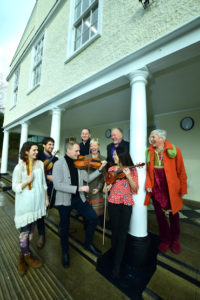
Soundworlds of Lauderdale House from Tudor times to today, a programme specially created for the Lauderdale House Local History Weekend (24 and 25 February), featuring words and music by Henry VIII, Charles I, Purcell, Beaumarchais, Haydn, Verdi, Debussy and Zeigenmeyer.
Insieme – Italian for ‘together’ – share their love of music and words with you through skilful, imaginative and joyful performances.
‘we listen with rapture and watch with glee; a sensational two hours bursting with charm’ Fringe Opera
Insieme, chamber opera ensemble are a new creative residency for 2018 at Lauderdale House featuring 10 talented singers and musicians who combine strings, woodwind, piano, voice and the spoken word:
Johanna Byrne – Artistic Director
Clare Clements – Musical Director
Eleanor Hemmens – Soprano
Brian Parsons – Tenor
Joe Corbett – Baritone
Caoimhe de Paor – Recorders
Mona Kodama – Violin
Guillem Calvo – Violin
Juan Drown- Viola
Frederique Legrand – Cello
Clare Clements – Piano
Johanna Byrne – Spoken Word
mini mozart
Mini Mozart offers fun and interactive live music classes for toddlers and babies. The classes feature two or more live instruments; a clarinet, violin, flute, French horn, saxophone or trumpet with a piano accompanist. The idea of Mini Mozart is to get children actually listening, not just hearing. Children interact with our live musicians in a way that is impossible with recorded music.
It’s hard to say which will be your favourite part of the class; the warm up where the teachers introduce their instruments allowing your little one to get up close and touch the instruments, or the part where they reveal their suitcase full of fun props that will entice your child on an interactive musical adventure.
Packed with puppets, parachutes & percussion, bursting with Bach & bubbles, and flush with fairy tales and flutes; follow our rotating team of 4 teachers and their piano accompanist on a multi-sensory musical journey that will inspire your little one with instruments from every section of the orchestra.
“I couldn’t wait to get out and about after Alfie was born. Mini Mozart was perfect because it was interesting for both of us!” Claire, Mum to Alfie (aged 4 months)
Start time: 9.30am for toddlers and 10.15 for babies.
Time: 09:30
Venue: Lauderdale House
| Price band | A | B |
| Standard | £143.00 | |
| Concession | ||
| Child |
Website: www.minimozart.com
One off payment of £143.00 or £47.66 every month for 3 months. Start time 9.30am for toddlers and 10.15 for babies.
The very popular Little Owl Book Club returns in January with an extra class due to demand. This award-winning class for kids age 2-4 takes place in our light and airy conservatory on Friday mornings. Devised with a reading specialist the class gives a fun start to phonics and letters. There are 2 great stories, a letter of the week taught with active games, then a fun art project to keep little hands busy.
Class 1: 10.00-10.50
Class 2: 11.05-11.55
No classes during half-term: Monday 12 -Friday 16 February
mini mozart
Mini Mozart offers fun and interactive live music classes for toddlers and babies. The classes feature two or more live instruments; a clarinet, violin, flute, French horn, saxophone or trumpet with a piano accompanist. The idea of Mini Mozart is to get children actually listening, not just hearing. Children interact with our live musicians in a way that is impossible with recorded music.
It’s hard to say which will be your favourite part of the class; the warm up where the teachers introduce their instruments allowing your little one to get up close and touch the instruments, or the part where they reveal their suitcase full of fun props that will entice your child on an interactive musical adventure.
Packed with puppets, parachutes & percussion, bursting with Bach & bubbles, and flush with fairy tales and flutes; follow our rotating team of 4 teachers and their piano accompanist on a multi-sensory musical journey that will inspire your little one with instruments from every section of the orchestra.
“I couldn’t wait to get out and about after Alfie was born. Mini Mozart was perfect because it was interesting for both of us!” Claire, Mum to Alfie (aged 4 months)
Start time: 9.30am for toddlers and 10.15 for babies.
Time: 09:30
Venue: Lauderdale House
| Price band | A | B |
| Standard | £143.00 | |
| Concession | ||
| Child |
Website: www.minimozart.com
One off payment of £143.00 or £47.66 every month for 3 months. Start time 9.30am for toddlers and 10.15 for babies.
The very popular Little Owl Book Club returns in January with an extra class due to demand. This award-winning class for kids age 2-4 takes place in our light and airy conservatory on Friday mornings. Devised with a reading specialist the class gives a fun start to phonics and letters. There are 2 great stories, a letter of the week taught with active games, then a fun art project to keep little hands busy.
Class 1: 10.00-10.50
Class 2: 11.05-11.55
No classes during half-term: Monday 12 -Friday 16 February
Julia Noble: “It’s just a kind of friendly relationship…..”
Materiality, process/rules and colour are the three aspects that define Julia Noble’s work. As an artist it is important to her that she engages the viewer’s senses, creating an aesthetic experience through the physical components of her paintings, which draw upon her experiences and desires.
Julia is drawn to art works where the puzzle for her is to ascertain how they were made, where things are not as they seem, trying to establish the processes that have been employed.
Her practice has been founded on two quotes that resonated with her in relation to the use of chance by abstract painters. Robert Rauschenberg said that “And even though chance deals with the unexpected and unplanned it still has to be organized before it can exist…” and that he “used the fact that wet paint would run, and lots of other things…it’s just a kind of friendly relationship with your materials”. Robert Morris refers to the “tendencies inherent in a materials/process interaction.” Rauschenberg’s words inspired the title of Julia’s exhibition. Her practice involves an investigation into her relationship with materials, the tendencies they possess and how those tendencies can be pushed together with the impact of colour.
Julia explains, “I seek to challenge the viewer with my complex system of production which results in kaleidoscopic rhythmic images. The starting point for many of my creations stems from elements of earlier works transforming them into something new using repeating forms, processes, and colour to provide different perspectives. Incorporating stitch as a drawing method the marks I make are relatively unconventional but also serve to disrupt the form and texture of the surface. Furthermore, stitching is synonymous with bringing together, a cohesive force unifying the separate elements of the work.
“My creations are instinctive, how they end up is determined by the processes and the colours that are used. I want them to be unashamedly joyful and uplifting full of curiosity and optimism.”
Highgate Gallery open Tue-Fri 1-5; Sat 11-4; Sun 11-5. Closed Mon.
Exhibition continues until 22 March.
Join award-winning songwriter and musician David Gibb on a musical journey through his hilarious and often surreal imagination, where bears live in the cupboard under the stairs, wolves are roaming the corridors at school and trips to the moon are a regular occurrence. David’s song writing draws from a wide range of musical influences, deftly blending folk, jazz, reggae and rock & roll. Climb That Tree is guaranteed to have both parents and children singing along in no time – this is music that the whole family can enjoy together. “Prepare to be carried away with the music…packed full of catchy, toe tapping numbers.” The Guardian. “David Gibb has a well-deserved cult following for his stage show which includes tales of dragons and driving chocolate cars. His lyrics are genuinely side-splitting, and tunes guaranteed to get stuck in your head for days.” Creative Tourist”
Julia Noble: “It’s just a kind of friendly relationship…..”
Materiality, process/rules and colour are the three aspects that define Julia Noble’s work. As an artist it is important to her that she engages the viewer’s senses, creating an aesthetic experience through the physical components of her paintings, which draw upon her experiences and desires.
Julia is drawn to art works where the puzzle for her is to ascertain how they were made, where things are not as they seem, trying to establish the processes that have been employed.
Her practice has been founded on two quotes that resonated with her in relation to the use of chance by abstract painters. Robert Rauschenberg said that “And even though chance deals with the unexpected and unplanned it still has to be organized before it can exist…” and that he “used the fact that wet paint would run, and lots of other things…it’s just a kind of friendly relationship with your materials”. Robert Morris refers to the “tendencies inherent in a materials/process interaction.” Rauschenberg’s words inspired the title of Julia’s exhibition. Her practice involves an investigation into her relationship with materials, the tendencies they possess and how those tendencies can be pushed together with the impact of colour.
Julia explains, “I seek to challenge the viewer with my complex system of production which results in kaleidoscopic rhythmic images. The starting point for many of my creations stems from elements of earlier works transforming them into something new using repeating forms, processes, and colour to provide different perspectives. Incorporating stitch as a drawing method the marks I make are relatively unconventional but also serve to disrupt the form and texture of the surface. Furthermore, stitching is synonymous with bringing together, a cohesive force unifying the separate elements of the work.
“My creations are instinctive, how they end up is determined by the processes and the colours that are used. I want them to be unashamedly joyful and uplifting full of curiosity and optimism.”
Highgate Gallery open Tue-Fri 1-5; Sat 11-4; Sun 11-5. Closed Mon.
Exhibition continues until 22 March.
Climb that Tree
Join award-winning songwriter and musician David Gibbs on a musical journey through his hilarious and often surreal imagination, where bears live in the cupboard under the stairs, wolves are roaming the corridors at school and trips to the moon are a regular occurrence. David’s songwriting draws from a wide range of musical influences, deftly blending folk, jazz, reggae and rock & roll. Climb That Tree is guaranteed to have both parents and children singing along in no time – this is music that the whole family can enjoy together. “Prepare to be carried away with the music…packed full of catchy, toe tapping numbers.” The Guardian. “David Gibbs has a well-deserved cult following for his stage show which includes tales of dragons and driving chocolate cars. His lyrics are genuinely side-splitting and tunes guaranteed to get stuck in your head for days.” Creative Tourist” Ages suitable for children aged 2-8 years.
Ticket Prices:
Adults/Children ( Standard) – £8.50
Adults/Children ( Concession) – £6.50
Family Ticket ( 2 Adults/ 2 Children) – £28.50
Family Ticket (Concession) 2 Adults/2 Children – £20.00
Under 18 months free.
To Book Tickets:
Box office: 02083488716
Email: enquiries@lauderdale.org.uk
Website: http://www.lauderdalehouse.co.uk
The beautiful 15th century Lauderdale House is at the south end of Highgate High Street. It is set in gorgeous Waterlow Park and next door is the famous Highgate Cemetery.
Artisan Market
MARCH, JUNE, SEPTEMBER & DECEMBER
SECOND SUNDAY 11AM-5PM
Duck Pond Market is back at Lauderdale House for quarterly 2017 markets with the best local artists, crafters, food producers and ethical businesses. There are locally made arts & crafts, gifts, vintage, homewares and clothing.
A tempting choice of locally made food to take home. London Craft Club host craft workshops for both adults and children. They also offer FREE crafting for children. Musicians perform live.
Julia Noble: “It’s just a kind of friendly relationship…..”
Materiality, process/rules and colour are the three aspects that define Julia Noble’s work. As an artist it is important to her that she engages the viewer’s senses, creating an aesthetic experience through the physical components of her paintings, which draw upon her experiences and desires.
Julia is drawn to art works where the puzzle for her is to ascertain how they were made, where things are not as they seem, trying to establish the processes that have been employed.
Her practice has been founded on two quotes that resonated with her in relation to the use of chance by abstract painters. Robert Rauschenberg said that “And even though chance deals with the unexpected and unplanned it still has to be organized before it can exist…” and that he “used the fact that wet paint would run, and lots of other things…it’s just a kind of friendly relationship with your materials”. Robert Morris refers to the “tendencies inherent in a materials/process interaction.” Rauschenberg’s words inspired the title of Julia’s exhibition. Her practice involves an investigation into her relationship with materials, the tendencies they possess and how those tendencies can be pushed together with the impact of colour.
Julia explains, “I seek to challenge the viewer with my complex system of production which results in kaleidoscopic rhythmic images. The starting point for many of my creations stems from elements of earlier works transforming them into something new using repeating forms, processes, and colour to provide different perspectives. Incorporating stitch as a drawing method the marks I make are relatively unconventional but also serve to disrupt the form and texture of the surface. Furthermore, stitching is synonymous with bringing together, a cohesive force unifying the separate elements of the work.
“My creations are instinctive, how they end up is determined by the processes and the colours that are used. I want them to be unashamedly joyful and uplifting full of curiosity and optimism.”
Highgate Gallery open Tue-Fri 1-5; Sat 11-4; Sun 11-5. Closed Mon.
Exhibition continues until 22 March.
mini mozart
Mini Mozart offers fun and interactive live music classes for toddlers and babies. The classes feature two or more live instruments; a clarinet, violin, flute, French horn, saxophone or trumpet with a piano accompanist. The idea of Mini Mozart is to get children actually listening, not just hearing. Children interact with our live musicians in a way that is impossible with recorded music.
It’s hard to say which will be your favourite part of the class; the warm up where the teachers introduce their instruments allowing your little one to get up close and touch the instruments, or the part where they reveal their suitcase full of fun props that will entice your child on an interactive musical adventure.
Packed with puppets, parachutes & percussion, bursting with Bach & bubbles, and flush with fairy tales and flutes; follow our rotating team of 4 teachers and their piano accompanist on a multi-sensory musical journey that will inspire your little one with instruments from every section of the orchestra.
“I couldn’t wait to get out and about after Alfie was born. Mini Mozart was perfect because it was interesting for both of us!” Claire, Mum to Alfie (aged 4 months)
Start time: 9.30am for toddlers and 10.15 for babies.
Time: 09:30
Venue: Lauderdale House
| Price band | A | B |
| Standard | £143.00 | |
| Concession | ||
| Child |
Website: www.minimozart.com
One off payment of £143.00 or £47.66 every month for 3 months. Start time 9.30am for toddlers and 10.15 for babies.
The very popular Little Owl Book Club returns in January with an extra class due to demand. This award-winning class for kids age 2-4 takes place in our light and airy conservatory on Friday mornings. Devised with a reading specialist the class gives a fun start to phonics and letters. There are 2 great stories, a letter of the week taught with active games, then a fun art project to keep little hands busy.
Class 1: 10.00-10.50
Class 2: 11.05-11.55
No classes during half-term: Monday 12 -Friday 16 February
Julia Noble: “It’s just a kind of friendly relationship…..”
Materiality, process/rules and colour are the three aspects that define Julia Noble’s work. As an artist it is important to her that she engages the viewer’s senses, creating an aesthetic experience through the physical components of her paintings, which draw upon her experiences and desires.
Julia is drawn to art works where the puzzle for her is to ascertain how they were made, where things are not as they seem, trying to establish the processes that have been employed.
Her practice has been founded on two quotes that resonated with her in relation to the use of chance by abstract painters. Robert Rauschenberg said that “And even though chance deals with the unexpected and unplanned it still has to be organized before it can exist…” and that he “used the fact that wet paint would run, and lots of other things…it’s just a kind of friendly relationship with your materials”. Robert Morris refers to the “tendencies inherent in a materials/process interaction.” Rauschenberg’s words inspired the title of Julia’s exhibition. Her practice involves an investigation into her relationship with materials, the tendencies they possess and how those tendencies can be pushed together with the impact of colour.
Julia explains, “I seek to challenge the viewer with my complex system of production which results in kaleidoscopic rhythmic images. The starting point for many of my creations stems from elements of earlier works transforming them into something new using repeating forms, processes, and colour to provide different perspectives. Incorporating stitch as a drawing method the marks I make are relatively unconventional but also serve to disrupt the form and texture of the surface. Furthermore, stitching is synonymous with bringing together, a cohesive force unifying the separate elements of the work.
“My creations are instinctive, how they end up is determined by the processes and the colours that are used. I want them to be unashamedly joyful and uplifting full of curiosity and optimism.”
Highgate Gallery open Tue-Fri 1-5; Sat 11-4; Sun 11-5. Closed Mon.
Exhibition continues until 22 March.
